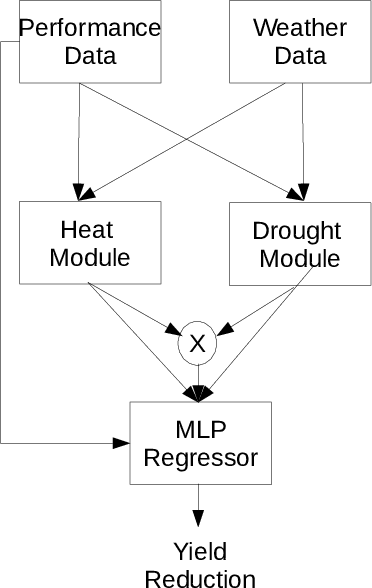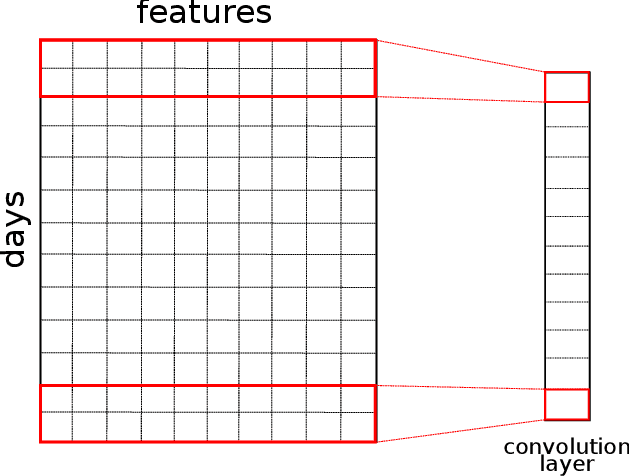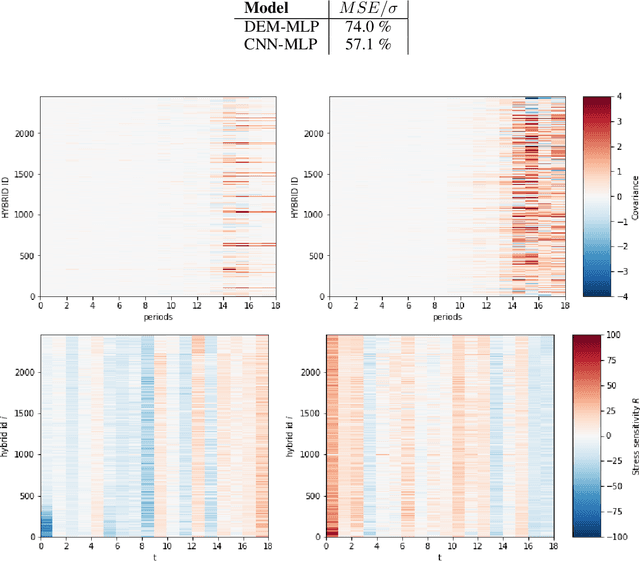Jannis Schuecker
Combining expert knowledge and neural networks to model environmental stresses in agriculture
Oct 26, 2021



Abstract:In this work we combine representation learning capabilities of neural network with agricultural knowledge from experts to model environmental heat and drought stresses. We first design deterministic expert models which serve as a benchmark and inform the design of flexible neural-network architectures. Finally, a sensitivity analysis of the latter allows a clustering of hybrids into susceptible and resistant ones.
Recurrent Point Processes for Dynamic Review Models
Jan 15, 2020

Abstract:Recent progress in recommender system research has shown the importance of including temporal representations to improve interpretability and performance. Here, we incorporate temporal representations in continuous time via recurrent point process for a dynamical model of reviews. Our goal is to characterize how changes in perception, user interest and seasonal effects affect review text.
Recurrent Adversarial Service Times
Jun 24, 2019



Abstract:Service system dynamics occur at the interplay between customer behaviour and a service provider's response. This kind of dynamics can effectively be modeled within the framework of queuing theory where customers' arrivals are described by point process models. However, these approaches are limited by parametric assumptions as to, for example, inter-event time distributions. In this paper, we address these limitations and propose a novel, deep neural network solution to the queuing problem. Our solution combines a recurrent neural network that models the arrival process with a recurrent generative adversarial network which models the service time distribution. We evaluate our methodology on various empirical datasets ranging from internet services (Blockchain, GitHub, Stackoverflow) to mobility service systems (New York taxi cab).
Informed Machine Learning - Towards a Taxonomy of Explicit Integration of Knowledge into Machine Learning
Mar 29, 2019



Abstract:Despite the great successes of machine learning, it can have its limits when dealing with insufficient training data.A potential solution is to incorporate additional knowledge into the training process which leads to the idea of informed machine learning. We present a research survey and structured overview of various approaches in this field. We aim to establish a taxonomy which can serve as a classification framework that considers the kind of additional knowledge, its representation,and its integration into the machine learning pipeline. The evaluation of numerous papers on the bases of the taxonomy uncovers key methods in this field.
 Add to Chrome
Add to Chrome Add to Firefox
Add to Firefox Add to Edge
Add to Edge